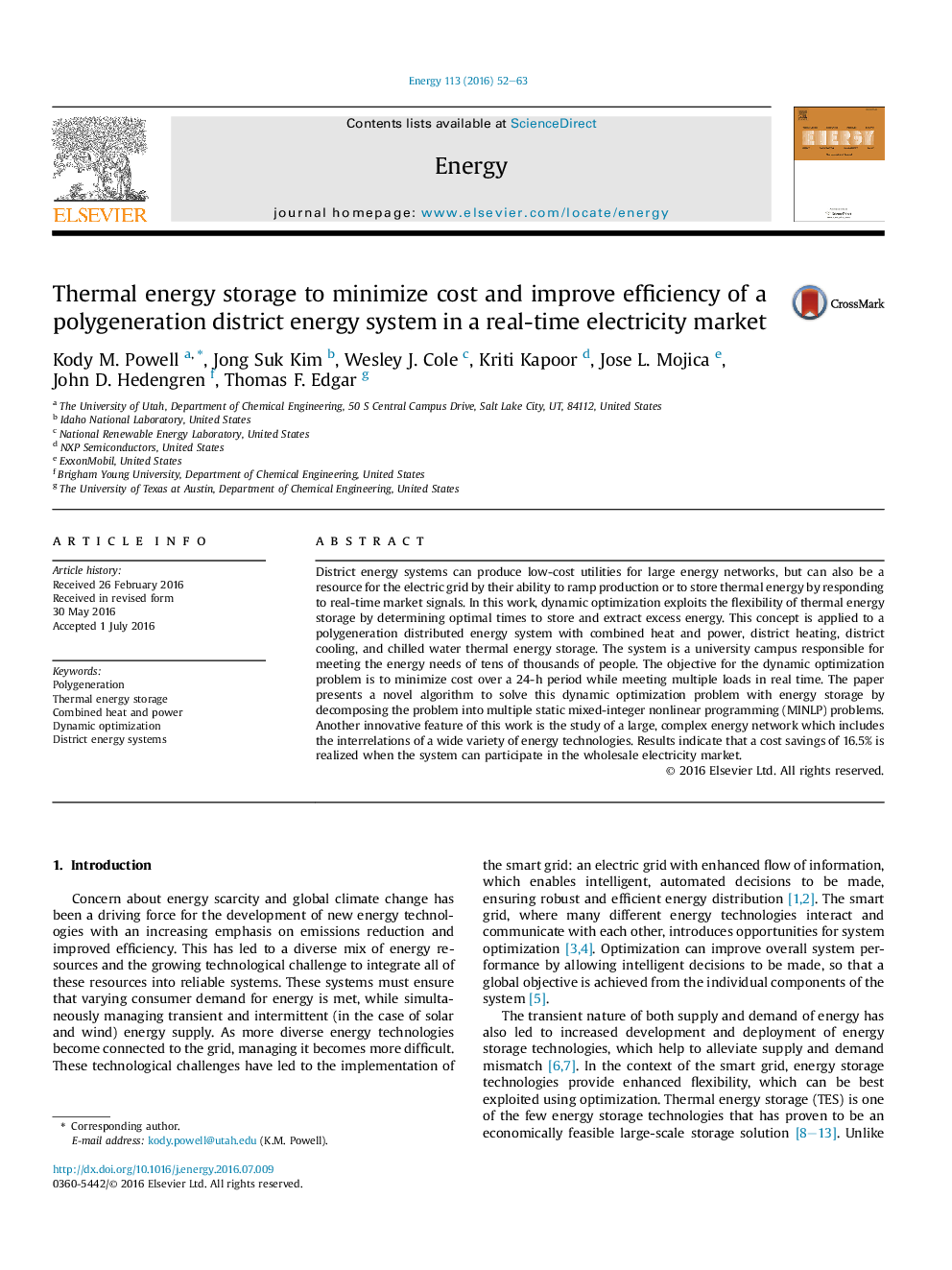| کد مقاله | کد نشریه | سال انتشار | مقاله انگلیسی | نسخه تمام متن |
|---|---|---|---|---|
| 1730720 | 1521435 | 2016 | 12 صفحه PDF | دانلود رایگان |
• A district energy system with central cooling, heating, and electricity generation is studied.
• The system is optimized over 24 h using thermal energy storage to shift loads.
• A novel static/dynamic decomposition is used to solve the dynamic optimization problem.
• Scenarios with buying and selling electrical power in a real-time market are considered.
• An annual savings of 16.5% is achieved going from base case to optimal with market participation.
District energy systems can produce low-cost utilities for large energy networks, but can also be a resource for the electric grid by their ability to ramp production or to store thermal energy by responding to real-time market signals. In this work, dynamic optimization exploits the flexibility of thermal energy storage by determining optimal times to store and extract excess energy. This concept is applied to a polygeneration distributed energy system with combined heat and power, district heating, district cooling, and chilled water thermal energy storage. The system is a university campus responsible for meeting the energy needs of tens of thousands of people. The objective for the dynamic optimization problem is to minimize cost over a 24-h period while meeting multiple loads in real time. The paper presents a novel algorithm to solve this dynamic optimization problem with energy storage by decomposing the problem into multiple static mixed-integer nonlinear programming (MINLP) problems. Another innovative feature of this work is the study of a large, complex energy network which includes the interrelations of a wide variety of energy technologies. Results indicate that a cost savings of 16.5% is realized when the system can participate in the wholesale electricity market.
Journal: Energy - Volume 113, 15 October 2016, Pages 52–63
